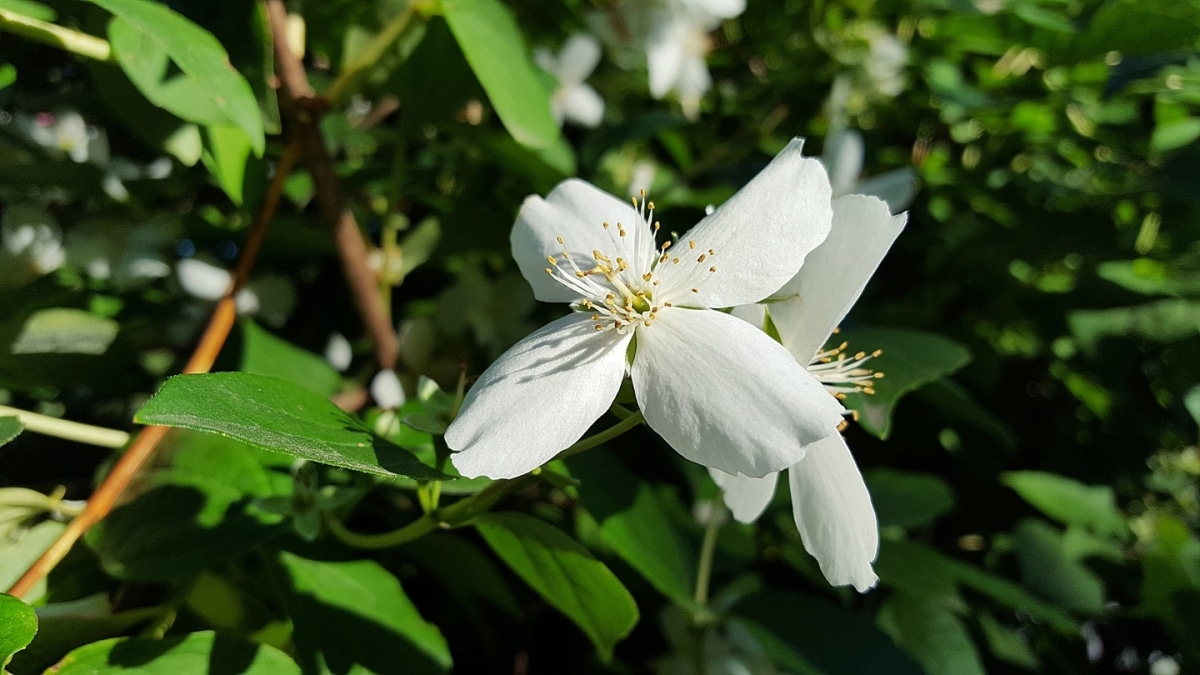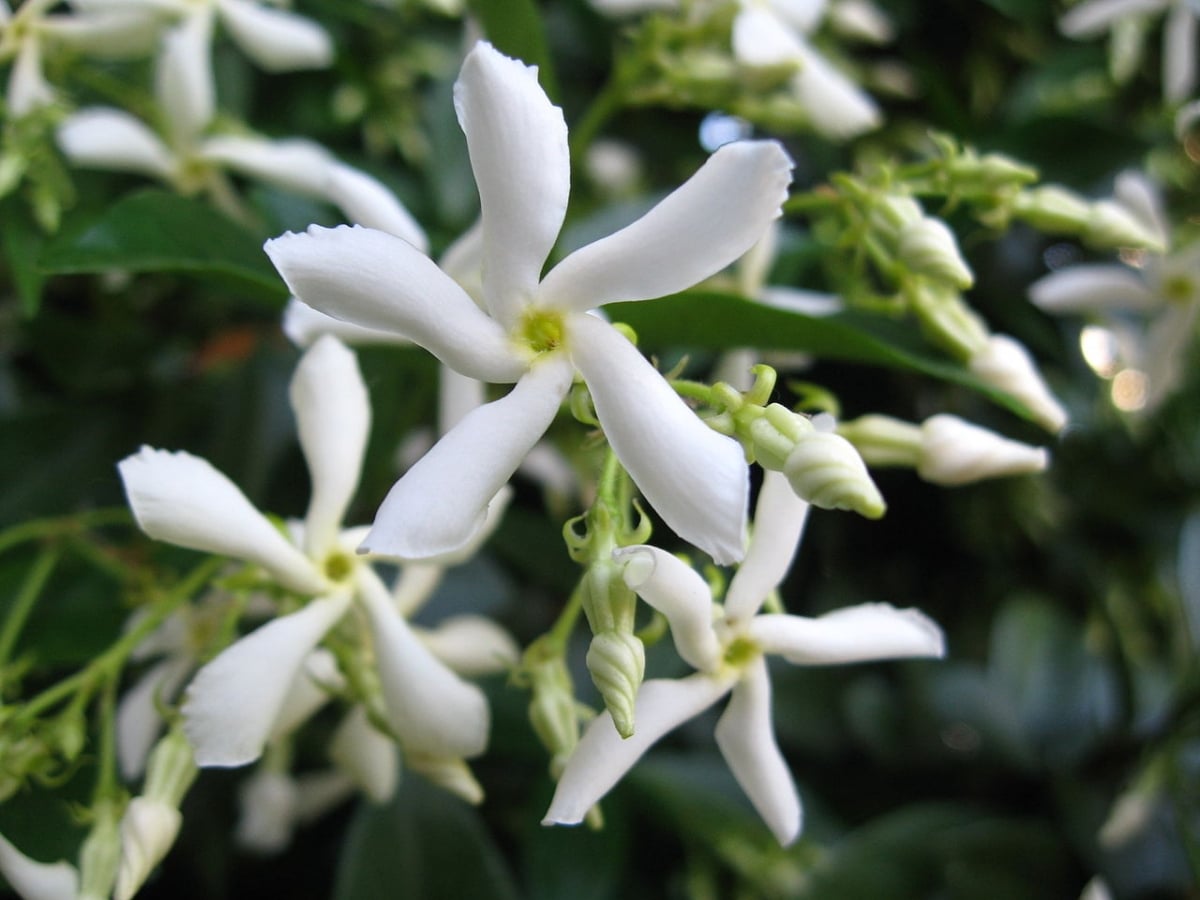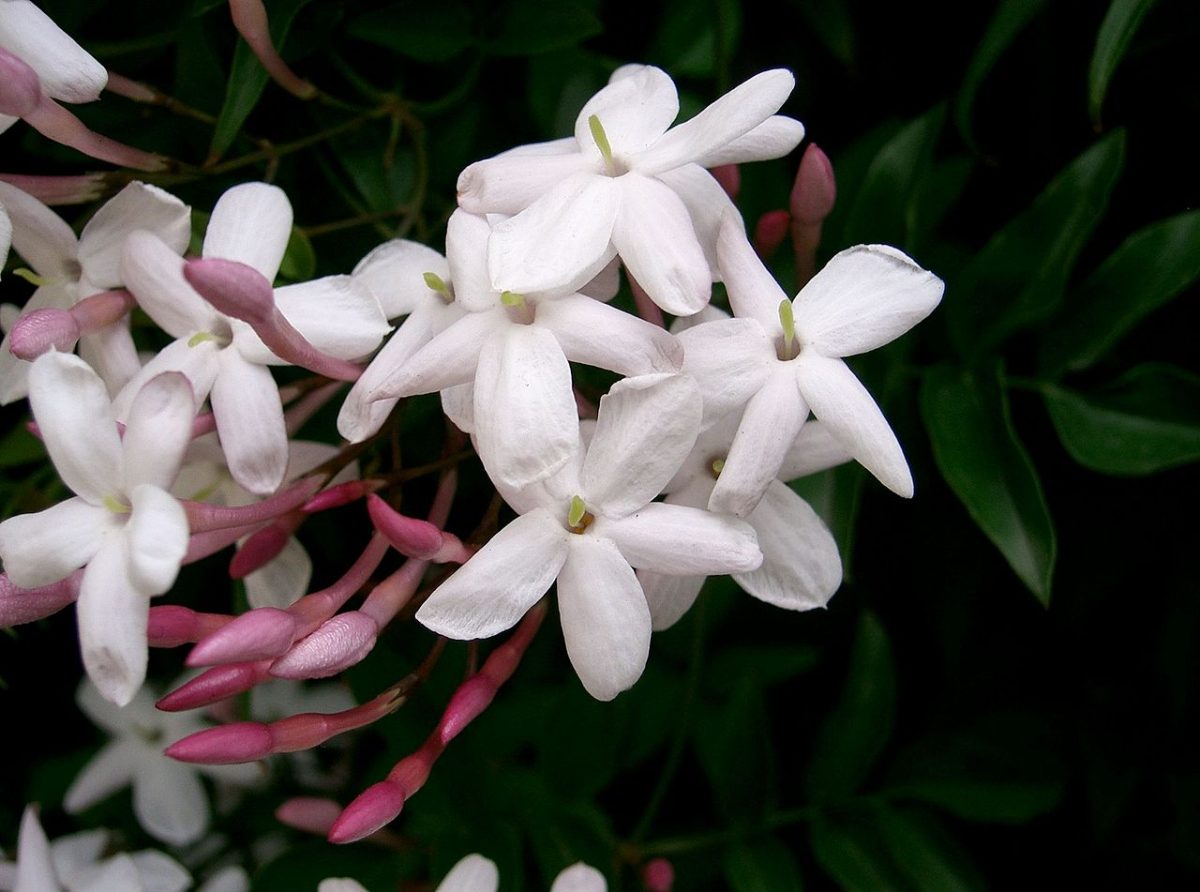
Jasmine is a climbing plant with showy, scented flowers that is grown in gardens and patios around the world. Although easy to grow, sometimes we may need to propagate an existing flower. An easy way to do this is through the method of putting jasmine cuttings in water. In this article, we will show you how to do it correctly.
Our goal is to show you the detailed steps to propagate your jasmine using water cuttings, as well as tips and tricks to ensure successful propagation. With a little patience and care, you can have a garden full of beautiful, scented jasmine in no time. Learn how to propagate your jasmine by cuttings in water easily and efficiently, and enjoy the beauty and aroma of this popular plant in your home.
What is the best time to plant jasmine?

Image - Wikimedia / Luca Camellini
Before explaining how to put jasmine cuttings in water, it is first important to know when is the best time to carry out this task. Generally, The best time to plant jasmine is during the fall or early spring. During these seasons, temperatures are cooler and wetter, which helps the root to establish itself. However, it is important to note that jasmine can also be planted in summer if it is properly watered and shade is provided during the hottest part of the day.
However, things change a bit when it comes to putting jasmine cuttings in water. This task should be carried out as soon as they are cut. In this way we will help to maintain humidity in the cutting, which will facilitate the formation of roots. We can take cuttings from a mature jasmine plant in spring or summer, when the plant is actively growing. We must make sure to remove the lower leaves of the cutting before putting it in water and change the water every few days to avoid the accumulation of bacteria.
jasmine reproduction

When playing the jasmine, there are different methods that we can apply:
- Seed propagation: Jasmine can be propagated from seed, but this method is less common as plants produced from seed will not be genetically identical to the parent plant.
- Propagation by layers: It is a method in which a branch of the mother plant is bent towards the ground and held in place with a stone or clip. It is covered with soil and watered until the roots have developed. The branch is then cut from the mother plant and planted in a pot or in the ground.
- Propagation by layering: This is a similar method to layering. It consists of cutting a branch from the mother plant and planting it in the ground at a 45 degree angle, covering only half of the branch with soil and waiting for the roots to develop. The branch is then cut from the mother plant and planted in a pot or in the ground.
However, the method of propagation that interests us is by cuttings. It is one of the most common and easiest methods of propagating jasmine. It consists of cutting a twig from a mature plant and putting it in a glass of water or in the ground so that it forms roots and becomes a new independent plant.
But what exactly is a cutting? Well then, a cutting is a part of a plant that is cut to reproduce a new plant. A bunch is cut from a mature plant and placed in a suitable medium for it to root and develop into a new independent plant. The medium can be soil, water or a special mixture for cuttings. Cuttings are a common method of vegetative reproduction in gardening and agriculture, since it allows the reproduction of plants identical to the mother plant.

It's important to know that Each method has its own advantages and disadvantages, and that it is advisable to research the type of jasmine we have and follow the specific instructions for that species.
How to put a jasmine cutting in water step by step
Now that we know when to put jasmine cuttings in water and what this method consists of, let's see how to do it. Step by Step:
- Create the cutting: First we have to select a healthy and vigorous twig from a mature jasmine plant. Using clean scissors, we must cut a cutting of about 10-15 cm in length, just below a knot or a bud. Then it is time to remove the lower leaves of the cutting, leaving only the upper leaves.
- Place the cutting in water: Next we must place the cutting in a glass with clean water, ensuring that the leaves are not submerged. The glass should be located in a warm place with indirect light. You have to change the water every 2-3 days.
- Wait: In a few weeks, roots should start to form on the cutting and we can transplant it into a pot with soil.
We must bear in mind that this is only one of the methods to reproduce jasmine in water, and that they can vary depending on the type of jasmine and environmental conditions. It is always recommended research the type of jasmine we have and follow the specific instructions for that species.
How long is a cutting left in water?
The length of time a jasmine cutting should be left in water before being transplanted into a pot of soil varies depending on environmental conditions and the type of jasmine. In general, it is recommended to leave the cutting in water for at least 2-3 weeks, or until visible roots form. However, it may take longer in some cases, especially if conditions are less than ideal. It is important to monitor the cutting regularly, making sure the water is clean and fresh, and changing it every 2-3 days. Once the roots are visible and sufficient, it can be transplanted into a pot with soil.
Now all that remains is to get down to work to reproduce our jasmine by cuttings in water!